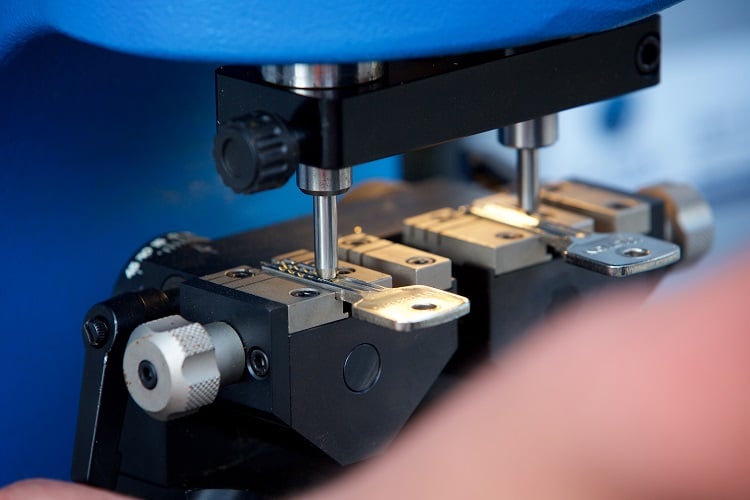A brief history of locks & the role of the locksmith
When you think of a locksmith, you picture someone who fixes locks and puts them in. They also cut duplicate keys. But, in the past, locksmiths played a key part. They designed, developed, and made locks and keys.
This brief history will give you an insight into the locksmith’s changing role. It will also cover the origins of the lock and its development into the modern locks we have today.

A brief history of locks & the role of the locksmith
The first locks were made entirely of wood
The Egyptians and the Babylonians invented the first locks about 4,000 years ago. They wanted to protect their valuable belongings.
Each civilization was independent. They used simple wooden locks. The locks worked on a pin-tumbler principle. Archaeologists found the oldest lock of this type. They found it in the ruins of an ancient Egyptian palace near Ninevah.
The introduction of metal
Around 900 AD, English craftsmen made the first locks from metal. The locks and padlocks made during this era were for noblemen and merchants. They were for those with expensive and valuable things to protect. Over time, the locks became more intricate.
The ancient Romans wore their small metal keys on their fingers. They did this to keep track of the important keys used to lock up their possessions. It was also a sign of wealth.
Years of innovation improve security
In the 18th century, lock picking became more common. So, locksmiths had to improve lock security and make locks more complex. In 1778, Robert Barron took the first steps to improve security. He patented a double-acting tumbler lock. Jeremiah Chubb improved this device in 1818. He added a lock spring to catch lock pickers.
But, in 1784, Joseph Bramah had taken a different route. It was different from the traditional lever lock. Experts considered his patented cylinder-based safety lock impossible to pick. Bramah offered a big reward to anyone who could pick his lock. But, it wasn’t until 50 years later that a lock picker did it. And, even then it took him a total of 16 days!

A brief history of locks & the role of the locksmith
In 1848 Linus Yale Sr. invented the pin-tumbler lock. His design was later tweaked by his son who improved the lock using a smaller, flat key with serrated edges – the basis of the popular Yale lock and other modern pin-tumbler locks you will find today. This was a time of innovation, and one of the many significant inventions was James Sargent’s combination lock design in 1857.
Mass production responds to growing demand
Many locksmiths continued to improve lock security and invent new types of locks for their clients, but demand was increasing quickly and by the 1900s most locks were being mass-produced.
This meant that the practice of inventing, designing, and fabricating locks became rarer, and instead, the locksmiths focused on repairing locks, the fitting of locks, and key cutting.
Today’s locks and the role of the locksmith
Today a large variety of locks are available in the marketplace and many are based on the lever, Bramah, Yale, and combination models mentioned above. But it’s also safe to say that the industry has entered the digital age, as it is becoming more and more common to come across electronic locking systems, keyless entry systems, and digital safes.
The role of a locksmith today is a varied one that requires a thorough knowledge of all of the different modern and traditional locks in the market, in order to be able to give you, the customer, the best advice about how to keep your home and belongings secure.


